After enjoying the nice view of Darvel Bay on Tower of Heaven, I went to climb Mount Silam. With a height of 884 Meters, Mount Silam is one of the highest mountains in Lahad Datu. Plant and animal enthusiasts will find that a hike on Mt. Silam is filled with pleasure surprises, due to rich variety of unique and endemic flora and fauna here. Thanks to Sabah Forestry Department, who keeps this mountain pristine in its 698-Hectare Sapagaya fully protected forest reserve.
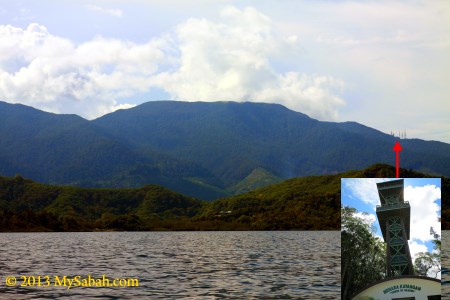
Pic: Mt. Silam and its Tower of Heaven (Menara Kayangan)
Mt. Silam is classified as an Ultramafic Coastal Mountain. In layman’s terms, the soil in Ultramafic environment is reddish brown in color and formed by ultrabasic rock. The soil has high concentration of heavy metals such as magnesium, iron, nickel, chromium and cobalt, but poor in plant nutrients such as nitrogen, phosphorus and potassium. The ultramafic substrates are “toxic” so the plants which can survive here are very different from other vegetations. That’s what makes Mt. Silam so special.
The Summit Trails
Climbing a 884-Meter mountain may sound taxing. But no worry, I started the climb at 620 Meter elevation (near the Tower of Heaven), so going up and down Mt. Silam took me less than 6 hours. Do bring raincoat, water and energy bars with you, as there is no shelter and water station along the way. Wear comfortable hiking shoes, and a trekking pole would help, though the climb is not tough.
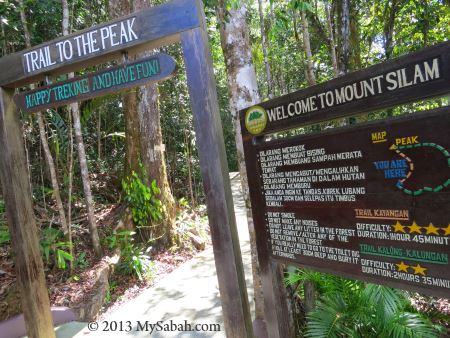
Pic: the start of the summit trail is just behind the Tower of Heaven.
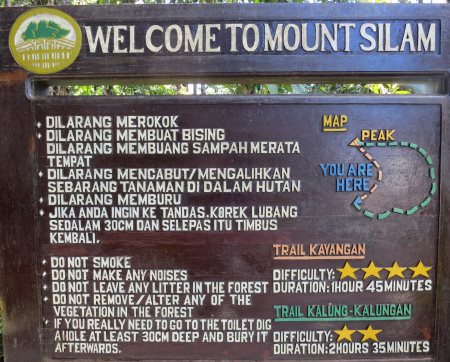
Pic: the trail signage. The dig-a-hole instruction makes me laugh. There is no toilet on the mountain.
As shown on the signage above, there are two trails to the summit, i.e. the easy but longer Kalung-Kalungan Trail (estimated 2.5 KM), and the shorter but difficult Kayangan Trail (estimated 1.5 KM). To get the most out of this climb, I did a “loop” climb by ascending via easy Kalung-Kalungan Trail and descending via Kayangan Trail.
The Kalung-Kalungan Trail is fairly easy and I spend most of the time walking. Kayangan Trail is steep and narrow, a bit challenging and it is quite slippery after rain, you need to climb and get dirty, so I only recommend Kayangan Trail to experienced hikers.
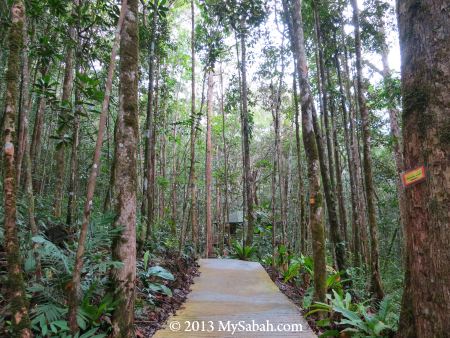
Pic: the paved walkway and lower montane forest (cloud forest) at the start of summit trail.
My climb starts at the lower montane forest zone (altitude: 540M – 770M asl), the trees here have relatively shorter and thinner stature than lowland forest. They get even smaller (but denser) when you move up to higher altitude.
Silam Crabs
If you pay attention to the forest floor near the tower, you will see some cute and orange-red Silam crabs foraging among leaf litters. This land crab is endemic to Sabah and only confined to ultramafic forest of Mt. Silam. Personally I call it the “Ruby of Mt. Silam” or you can call it the Sabahan Crab, haha, whatever.
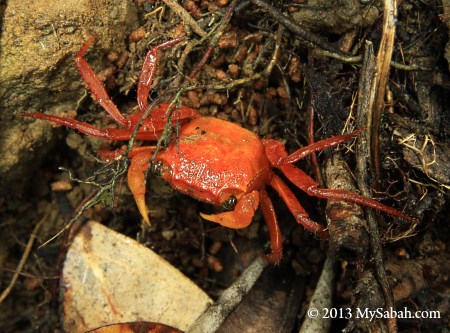
Pic: Silam Crab (Species: Geosesarma aurantium)
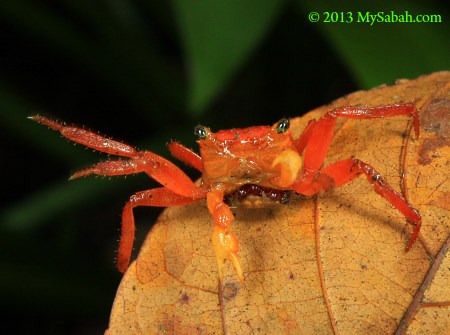
Silam Crab can be found up to the peak of Mt. Silam. Isn’t it weird to see seafood living on mountain? The red-orange shell (carapace) of this crab also reminds me of the color of steamed crab served on dish. Most of them are shy and flee to crevices before I can photograph them. A few are bold to face my lens. When threatened, they tap the ground with legs, making sound to warn the invaders.
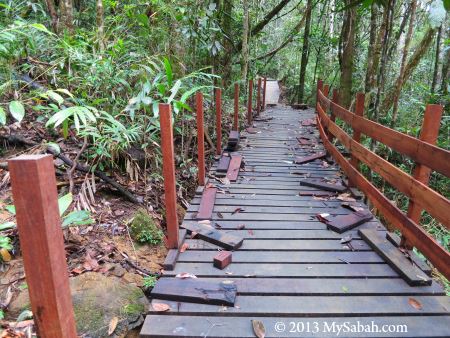
Pic: boardwalk under construction, watch your steps.
Mt. Silam is open to public in year 2012 so it is still new. Sabah Forestry Department is busy improving the amenities and accommodation.
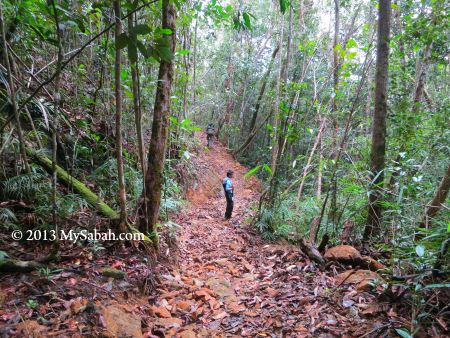
After 100 Meters of paved walkway and boardwalk, I came to the nature trail, no more man-made structure and support after this point. The air is as cooling as air-cond and I was wearing a thin T-shirt, but I still sweated a lot due to the long hike. The trail is well-maintained and the route is clear, so you won’t lose in the jungle, even without the trail markers. There was no forest leech during my visit. Though the trail is not tourist-friendly, most people won’t find it too hard to hike Kalung-Kalungan trail.
The Animals
Besides Silam Crab, there are some wildlife living in Mt. Silam. However, most of them are small animals.
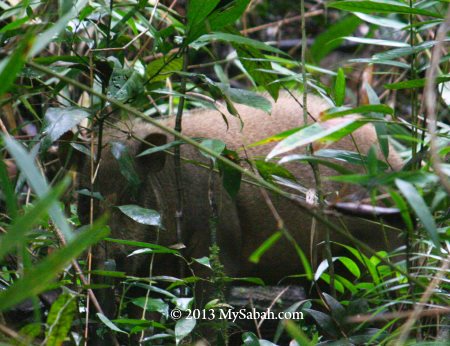
There are 23 mammal species such as Sambar Deer, Banteng (Wild Ox), Giant Flying Fox, Slow Loris and Bornean Gibbon on Mt. Silam. Bearded pig (wild boar) is the easiest one to spot as they seem to eat day and night. I saw a few groups of macaques on the trees too.
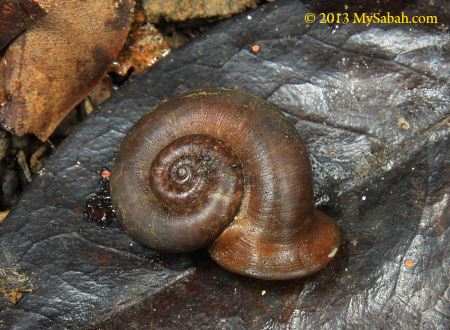
Pic: forest snail that looks like a trumpet
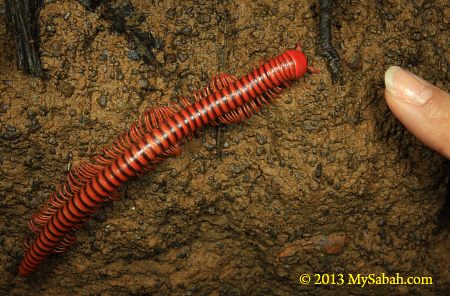
Pic: giant millipede
If you like birdwatching, there is a mix of lowland, sub-montane and coastal birds in this area. A few noteworthy birds are Black-backed Kingfisher, Rufous Piculet, Chestnut-crested Yuhina and Red-bearded Bee Eater. I saw Emerald Dove, Leaf Warbler and Blyth’s Hawk Eagle.
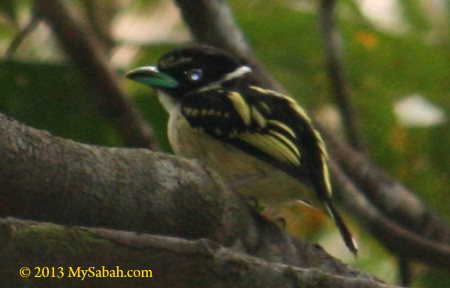
Pic: Black and yellow Broadbill
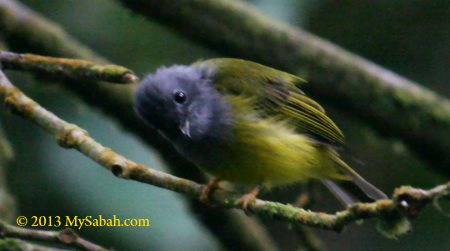
“Hi!” from a curious warbler.
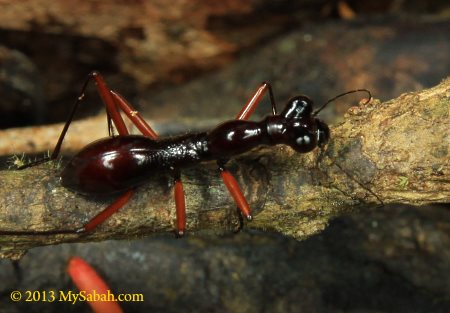
Pic: Tiger Beetle that looks like an ant
Tiger Beetle is the Olympian runner of insect world. If human is as fast as a Tiger Beetle, he can run at 770 KM per hour, meaning he can run from LA and reach New York within 6 hours on feet.
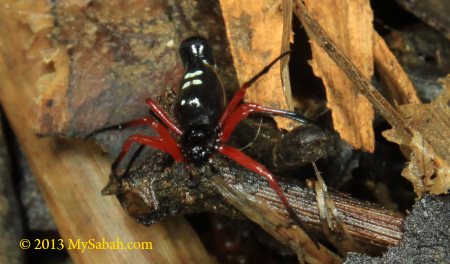
Pic: an unknown spider
The Plant
The plant biodiversity of Mt. Silam is amazing, as there are 374 tree species in four main forest types on different altitudes of this small mountain, each has its unique characteristics:
- 200M – 300M: Lowland ultramafic forest
- 330M – 540M: Upland ultramafic forest
- 540M – 770M: Lower montane ultramafic forest
- 770M+: Upper montana ultramafic forest (Mossy Forest)
Keep your eyes on the grass, flowers, bamboo, trees, etc., they can be endemic plant of Sabah and Borneo.
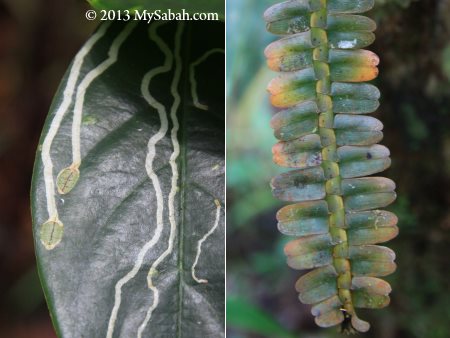
Pic: strange leaves
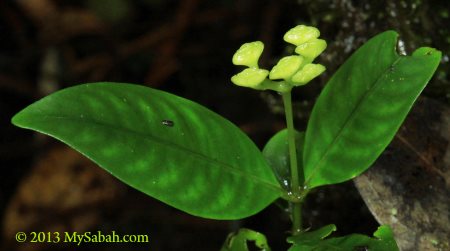
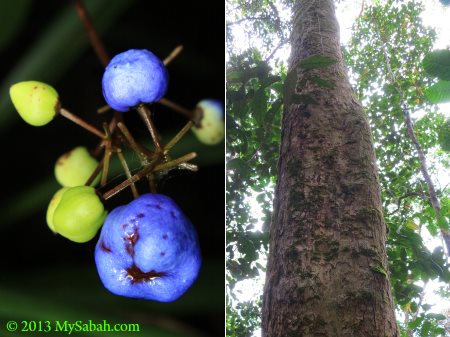
Pic: (left) Poisonous berries of Flax Lily, (right) Bangkau-Bangkau, the Enigmatic Bornean Tree endemic to Sabah.
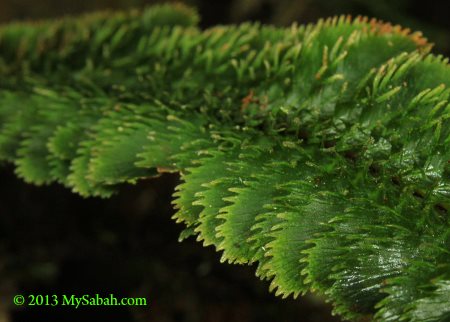
Orchids
Orchids are everywhere, especially around the ridge area at 800M and above. Many orchids here are epiphytic, which means they live on trees that provide them support and more sunlight on higher spot.
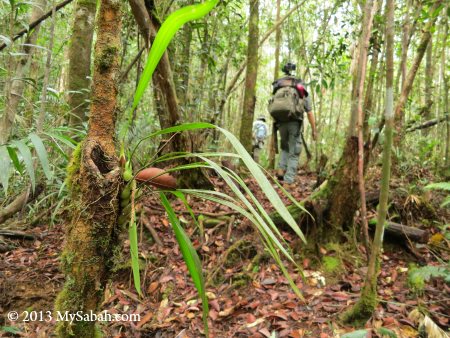
They grow on the tree, mossy carpet, slope… Too bad I didn’t visit during the blooming months of orchid, which usually occurs in Feb and Mar after rainy season. Anyway, a few were generous to give us a showtime.
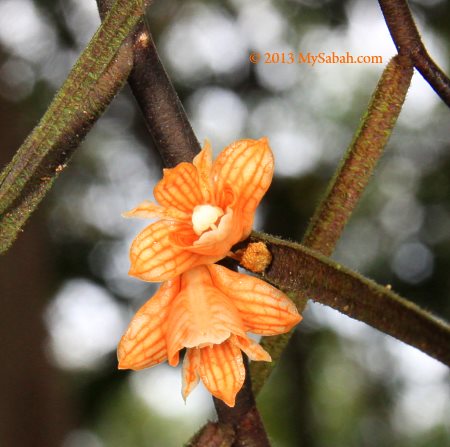
Pic: this orchid grows high on top.
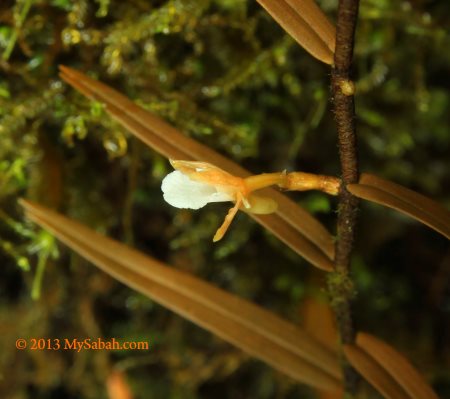
Unlike the flamboyant big commercial orchids, native orchids are generally very small and not easy to spot.
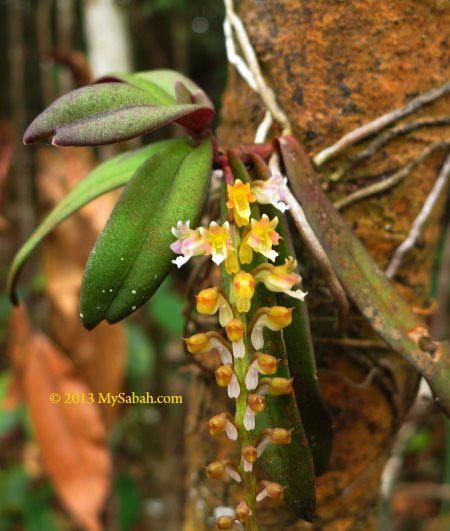
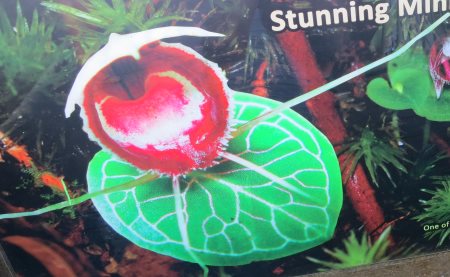
Pic: this heart-shaped Jewel Orchid (Species: Corybas serpentinus) is only found in Sabah and the one I want to see the most, but sadly no blooming.. So I only can show its photo from poster. Another tiny orchid that I want to see is Porpax borneensis, which is also endemic to Sabah.
Pitcher Plants
Pitcher plant is abundant on Mt. Silam, you have to be blind to miss it. Some species such as Nepenthes reinwardtiana, Nepenthes tentaculata, Nepenthes macrovulgaris and Nepenthes stenophylla are endemic to Sabah or Borneo.
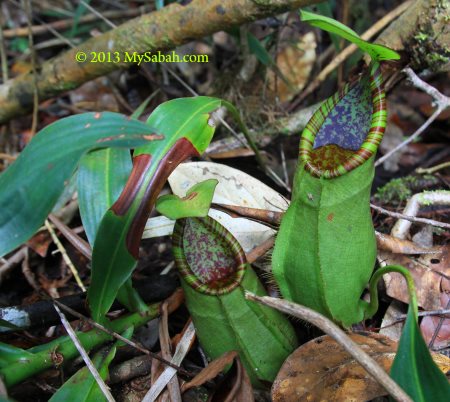
Pic: pitcher plant in the garden near the Tower of Heaven.
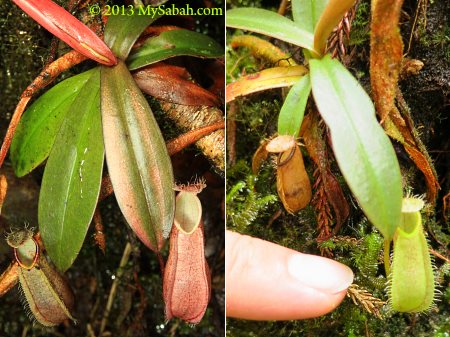
Pic: The top of Mt. Silam is blanketed by this small Nepenthes tentaculata, the most common montane species in Borneo. Note the hairs on its lid.
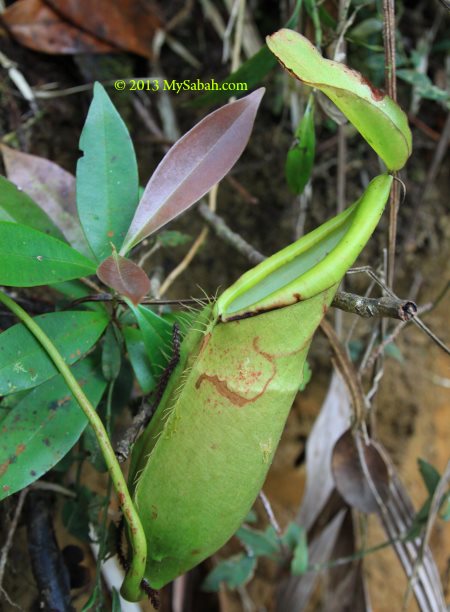
Pic: the upper pitcher of Nepenthes macrovulgaris (endemic to Sabah)
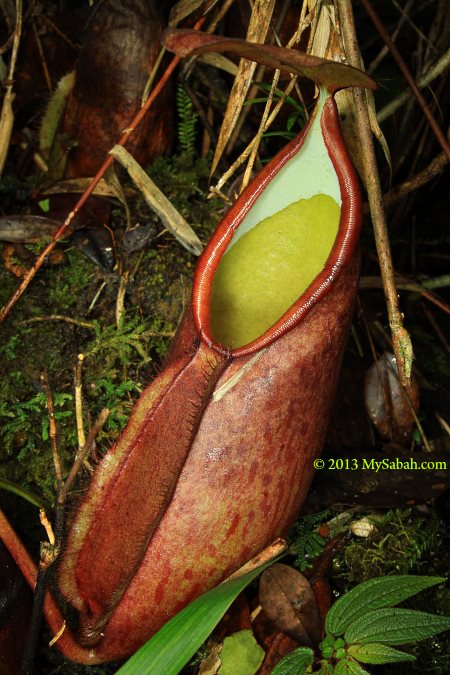
Pic: the lower pitcher of Nepenthes macrovulgaris in red color
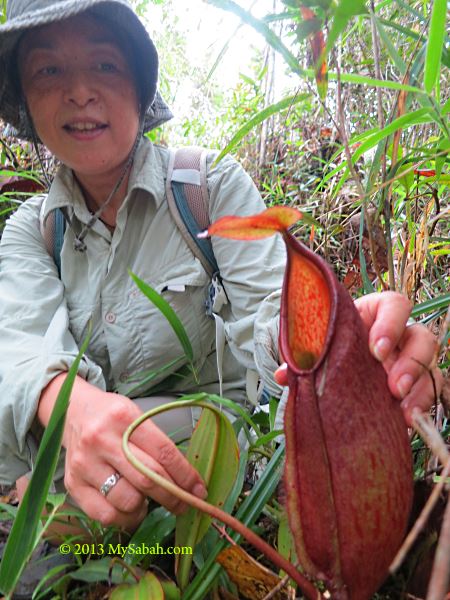
Pic: just to show you how big is the pitcher plant on Mt. Silam.
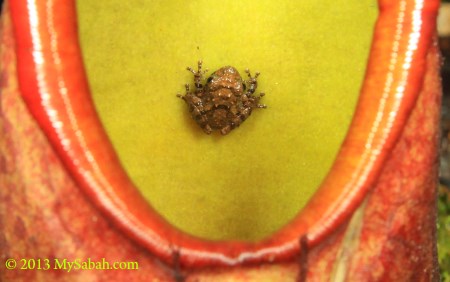
Pic: some frog species live and grow inside the pitcher plant. Scientists still try to find out why.
Upper Montane Forest (Mossy Forest)
Mossy forest is normally found from 2,000M up to 2,700M above sea level, but you can find Mossy Forest after 770M elevation on Mt. Silam. Mt. Silam is experiencing Massenerhebung effect, a natural phenomenon that different vegetation zonation “compressed” on a small and isolated mountain.
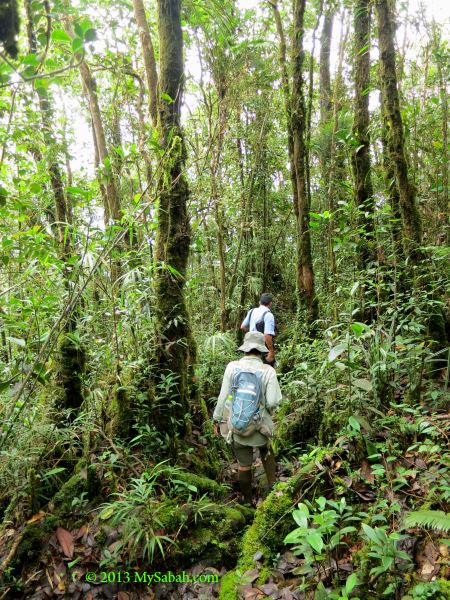
Pic: the mossy forest of Mt. Silam on higher altitude.
The Mossy Forest is characterized by small pole trees and mossy ground. Cushion moss is important for the water balance of ecosystems in the forests by storing large amounts of water. Such wet environment is important for orchids.
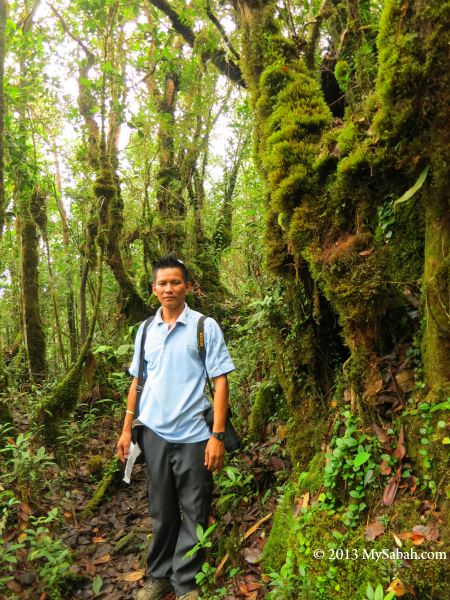
Pic: Vivian, our guide standing next to the the trees full of epiphytes.
The ground, tree trunks and branches of Mossy Forest are covered by thick humus layer and enveloped with mosses.
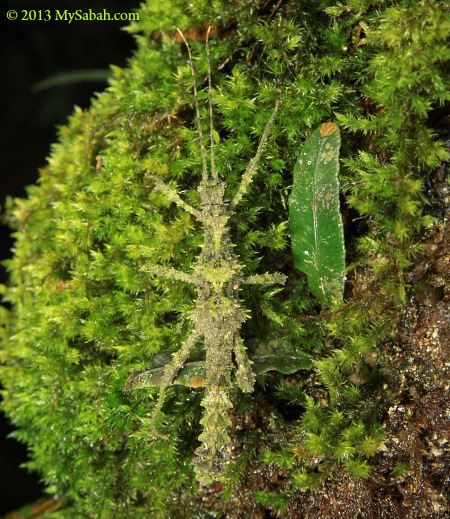
Pic: a mossy stick insect blends into the mossy environment perfectly.
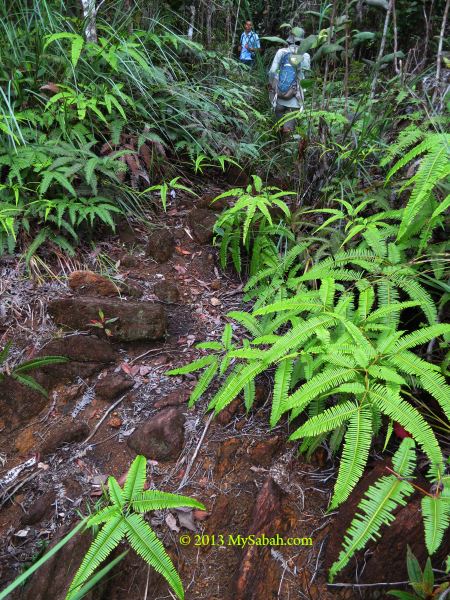
Pic: walking on the ridge near the summit. You can see the exposed reddish-brown ultrabaisc soil. The fern in the photo is Dicranopteris curranii (local name: paku resam), the most abundant fern species, it is ecologically important for moderating harsh surface temperature environment.
For more reading on natural wonders of Mount Silam, you may download the pamphlet below (published by Sabah Forestry Department):
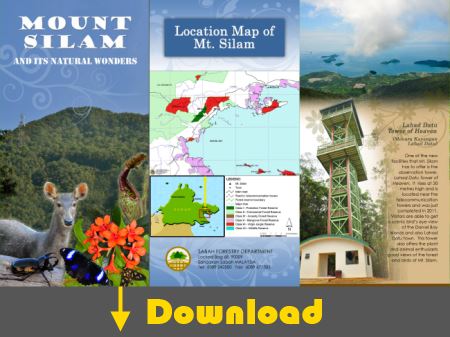
Personally, for hikers in Sabah’s East Coast, I think Mount Silam is the best mountain for an enjoyable half-day climb, because it is easy and rich in flora and fauna. For more info (accommodation, direction, etc.) about Mt. Silam, you may read my earlier post about Tower of Heaven.
Photos taken in Lahad Datu, Sabah, Malaysia Borneo
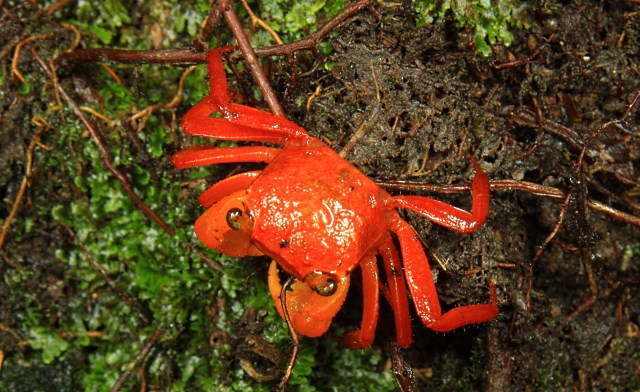

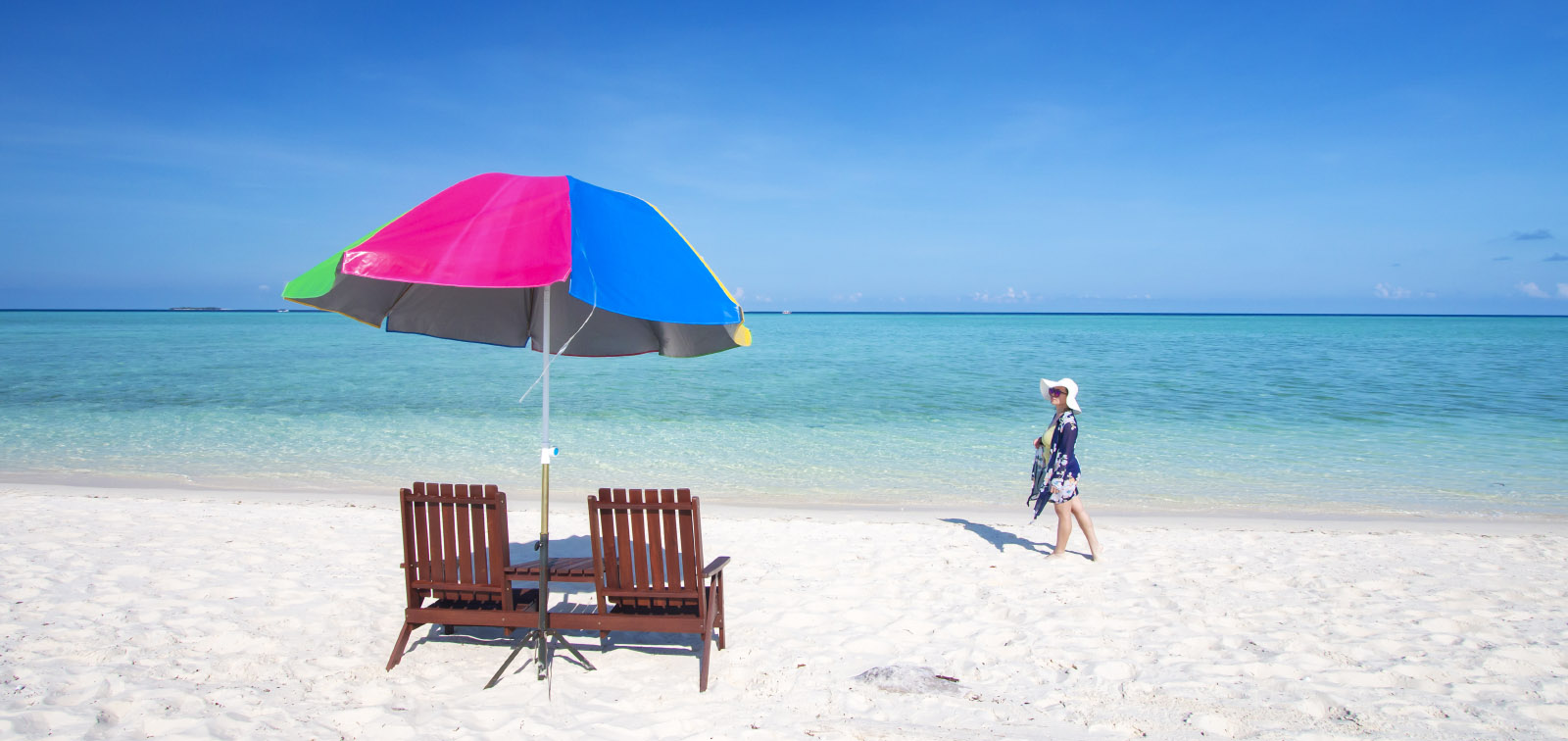
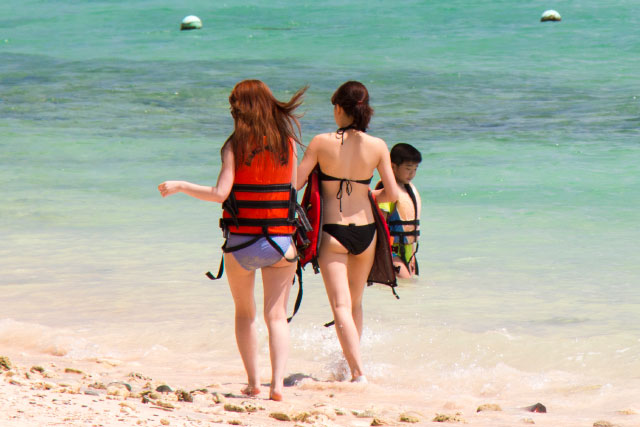

Interesting! thanks so much for the info 🙂
My pleasure CT. 🙂 This little mountain is worth looking at.